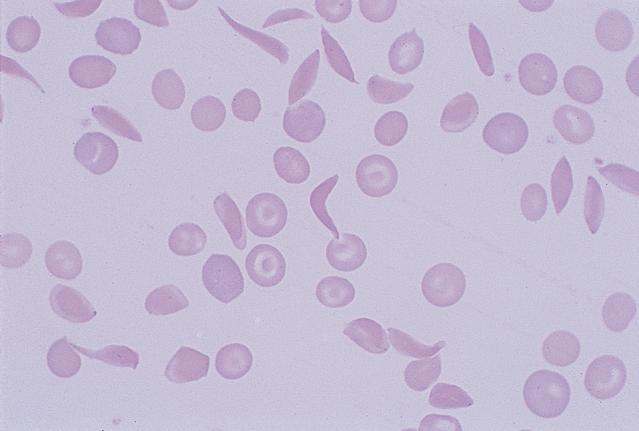NEET PG / USMLE – MCQ 22
A 2-year-old boy is brought to the emergency department because of shortness of breath and left-sided abdominal pain for 3 hours. He appears pale. Physical examination shows hypotension and tachycardia. There is splenomegaly with the spleen tip palpated 8 cm below the left costal margin.
Laboratory studies show:
Hemoglobin – 5.1 g/dL (N=12.1–14.9)
Hematocrit – 16% (N=37%–44.4%)
Leukocyte count – 4500/mm3 (N=4000–11,500)
Platelet count – 87,000/mm3 (N=150,000–400,000)
A photomicrograph of a Wright-stained peripheral blood smear is shown. Which of the following is the most likely cause of this patient’s current condition?
A. Aplastic crisis
B. Autoimmune hemolysis
C. Congestive heart failure
D. Salmonellal sepsis
E. Splenic sequestration
Correct answer : E. Splenic sequestration
Explanation: Peripheral smear shows sickle cells. So this is a case of sickle cell anemia. Presently the patient is in a state of sequestration crisis. Splenic sequestration explains the decrease in hemoglobin, hematocrit, platelet count and the increased size of spleen. Sequestration is also responsible for the hypotension and tachycardia. There are no precipitating factors for an aplastic crisis. No features of sepsis are present.




b
Aplastic crisis
splenic sequestration ue to sicle cell crisis..
splenic sequestration
the picture in question is sickle cell anemia .salonellal osteomyelitis is common in sickle cell patients.but salmonella usually causes neutopenia and bradycardia but the child in question has tachycardia nd normal wbc count.additional features include abdominal pain ,hypotension nd tachycardia which indicates spllenic sequestation hence i go for spleenic sequestration
E
It is sickle cell crisis.. So must be splenic sequesteration..
E) Splenic Sequestration
ans is e
e.splenic sequestration